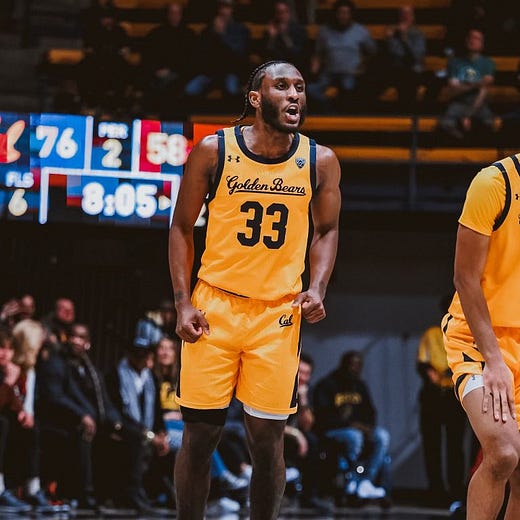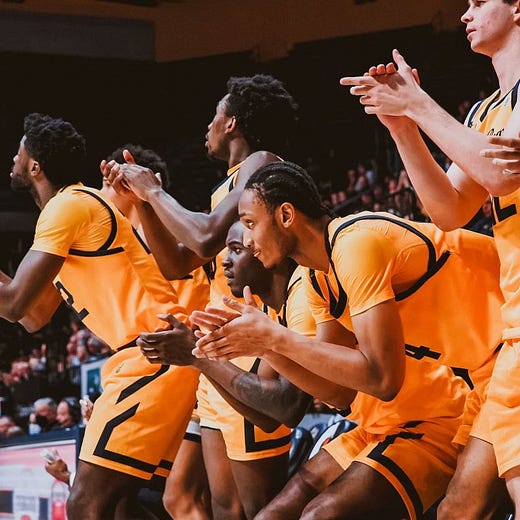Making sense of a bizarre men's basketball season
Or, at least trying to understand a team that has been better against Pac-12 teams than low majors.
Cal men’s basketball is confounding. Inexplicable. A historic anomaly. So much so that I’m not even sure where to begin.
Hopefully you’ve already read BP’s breakdown of the Stanford game. I’m going to jump in with some numbers of my own, both from this individual game and the season at large.
[More coming later this week on WBB, who took Stanford to the wire, impressed Steph Curry, and have turned their season around defensively over the last couple weeks.]
Let’s start with one of the most astounding single game performance I can recall. Entering Friday’s game against Stanford, Cal was 65/236 from three on the season, good for 27.5%. That would currently place Cal 351st in the rankings. The Bears then shot 16/22 on the game, rocketing their season percentage up to 31.4 overnight.
What are the odds that a team shooting 27.5% would go 16/22 from deep? I don’t know, and I’m not qualified to calculate it, but I can tell you that in the history of Cal MBB, this game is an absurd outlier. For one thing, there just aren’t that many game where Cal even attempts 20+ three pointers. So, while the Cal record books will tell you that the single-game 3 point shooting record is 85.7%, it’s not that impressive that Cal went 6/7 in a game in 1986.
Since 2002 (which is how far back Kenpom single game records go), here are games where Cal attempted 14+ three pointers and hit 60% or higher:
2002: 11-17, 64.7%, vs. Oregon
2003: 11-18, 61.1%, vs. Howard
2012: 9-14, 64.3%, vs. Denver
2022: 10-15, 66.7%, vs. San Diego
2023: 16-22, 72.7% vs. Stanford
This obviously isn’t exhaustive with the 2002 cut-off date, but I doubt there were a ton of games that meet the criteria prior to 2002, because most teams just didn’t attempt that many 3s back in the 90s or earlier.
Games where Cal has a high volume of three point attempts AND makes an unusually high percentage happen maybe once every 4 or 5 years, and even then Friday’s game was extreme both in volume and percentage. If Jerome Randle, Patrick Christopher, and Theo Robertson had done what Cal did on Friday it would have been a historic performance. THIS team, doing what they did against Stanford, boggles the mind.
And perhaps the best number to put this in perspective? The NCAA D1 record for three point field goal percentage in a single game, minimum 20+ attempts is 17-21 (81%) by Wofford in 2016. Wofford, it’s worth noting, shot 41% from three that season, 7th in the nation. This Cal team was two made 3s away from breaking that record!
OK, you get it - weird things can and do happen in a single college basketball game. It’s a safe bet that over the course of the rest of the season, Cal will not be a 27.5% 3 point shooting team, nor approach 70% single game shooting again. But there’s something else worth exploring. Here is a list of Cal’s most efficient offensive performances so far this season, ranked by points/possession
Stanford, 1.54 ppp (ed. note: hahahahahaha furd)
UT Arlington, 1.20 ppp
Colorado, 1.11 ppp
Arizona, 1.01 ppp
Three of Cal’s four best offensive performances have come against Pac-12 competition. Cal performed better against quality Colorado and Arizona defenses than they did against Texas St. or Eastern Washington. Hell, Cal is currently 3rd in the Pac-12 in offensive efficiency in conference games only, though that’s HEAVILY influenced just by crushing Stanford.
Does this mean anything? Is there anything to read into this other than randomness? Obviously, DeJuan Clayton’s return from injury was a major factor against Stanford, but the 7th year senior wasn’t available against Arizona and didn’t have a noteworthy performance against Colorado, so his return is not by itself an explanation.
I’m confounded. I didn’t particularly understand how this team could start 0-12, and I don’t particularly understand how this team looks more or less like an average Pac-12 in conference play.
Two other quick notes:
ND Okafor over the last 4 games: 10-15, 25 points, 14 rebounds, 0 turnovers
Grant Newell over the last 4 games: 11-21, 30 points, 21 rebounds
There are serious signs that both freshmen are legit Pac-12 players who have turned a corner in their debut seasons. In an otherwise lost season, watching their progression has been a highlight.






"What are the odds that a team shooting 27.5% would go 16/22 from deep? I don’t know, and I’m not qualified to calculate it, but I can tell you that in the history of Cal MBB, this game is an absurd outlier."
The odds of this Cal team making 16 (or more) threes out of 22 is about 1 in 75,000. By contrast, the odds of that Wofford team going 17/21 is only 1 in 4500.
I think knowledgeable observers of the men's basketball team would appreciate that at the beginning of the season, Cal was using a combination of inexperience players. To his credit, Coach Fox developed his bench, even as it cost them early games, in spite of some good defensive performances. But finally, with the return of injured players, and the development of others like the two freshmen mentioned in the article, the Bears have combined strong defense with adequate offense. In the Colorado game they learned they have to finish which they did against a woeful Stanford team. The match-up in Pullman will be more difficult, as it will in Seattle. Both teams have strong inside players that Lars and Okafor will have difficulty defending, and will make penetration to the basket much more daunting. We can only hope that the Bears improved play and experience will enable them to compete effectively and competitively.